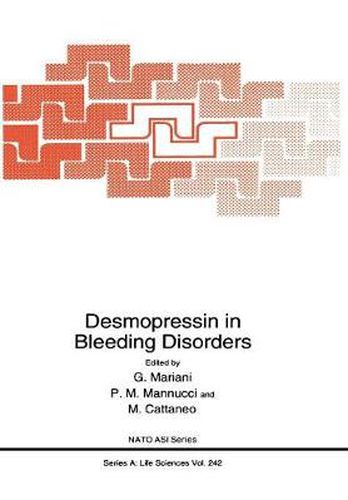Readings Newsletter
Become a Readings Member to make your shopping experience even easier.
Sign in or sign up for free!
You’re not far away from qualifying for FREE standard shipping within Australia
You’ve qualified for FREE standard shipping within Australia
The cart is loading…






This title is printed to order. This book may have been self-published. If so, we cannot guarantee the quality of the content. In the main most books will have gone through the editing process however some may not. We therefore suggest that you be aware of this before ordering this book. If in doubt check either the author or publisher’s details as we are unable to accept any returns unless they are faulty. Please contact us if you have any questions.
Before the introduction of DDA VP, centrnl diabetes insipidus was treated by the administration of a more or less purified extract from bovine or porcine posterior pituitaries, and the prepamtions were mostly given in the form of nasal snuff. In 1956, the structure of vasopressin became known and two forms were found, namely arginine vasopressin (A VP) in humans and most other species, and lysine vasopressin (L VP) which was found in the pig. In 1967, Zaornl et al. were the frrst to synthesize l-desamino-8-D-arginine vasopressin, DDA VP. In comparison with the compounds which were previously available, DDA VP offered increased antidiuretic potency and an equally distinct shift of the antidiuretic to pressor potency rntio. As a result of the pioneering studies of Cash and Mannucci, numerous publications appeared in the medical literature of the 80’s, widening the fields of clinical application of the drug. A very important aspect of this drug is that it can be used as an alternative treatment for mild factor VllI deficiencies, mild hemophilia A and von Willebrnnd’s disease. These congenital deficiencies are far from mre and have, up to now, been treated with plasma-derived factor VIII concentrates; in the countries in which desmopressin has not been used a consistent proportion of these patients have seroconverted for HIV 1 and hepatitis.
$9.00 standard shipping within Australia
FREE standard shipping within Australia for orders over $100.00
Express & International shipping calculated at checkout
This title is printed to order. This book may have been self-published. If so, we cannot guarantee the quality of the content. In the main most books will have gone through the editing process however some may not. We therefore suggest that you be aware of this before ordering this book. If in doubt check either the author or publisher’s details as we are unable to accept any returns unless they are faulty. Please contact us if you have any questions.
Before the introduction of DDA VP, centrnl diabetes insipidus was treated by the administration of a more or less purified extract from bovine or porcine posterior pituitaries, and the prepamtions were mostly given in the form of nasal snuff. In 1956, the structure of vasopressin became known and two forms were found, namely arginine vasopressin (A VP) in humans and most other species, and lysine vasopressin (L VP) which was found in the pig. In 1967, Zaornl et al. were the frrst to synthesize l-desamino-8-D-arginine vasopressin, DDA VP. In comparison with the compounds which were previously available, DDA VP offered increased antidiuretic potency and an equally distinct shift of the antidiuretic to pressor potency rntio. As a result of the pioneering studies of Cash and Mannucci, numerous publications appeared in the medical literature of the 80’s, widening the fields of clinical application of the drug. A very important aspect of this drug is that it can be used as an alternative treatment for mild factor VllI deficiencies, mild hemophilia A and von Willebrnnd’s disease. These congenital deficiencies are far from mre and have, up to now, been treated with plasma-derived factor VIII concentrates; in the countries in which desmopressin has not been used a consistent proportion of these patients have seroconverted for HIV 1 and hepatitis.